Exhibition examines the fertile interaction between Islam and the Classical world
NEW YORK, NY.- With manuscripts culled from international collections and assembled together for the first time, Romance and Reason: Islamic Transformations of the Classical Past on view at the Institute for the Study of the Ancient World explores the ways in which Islamic scholars, scientists, doctors, philosophers, and writers absorbed and transformed the Classical Greek intellectual heritage for their own uses and, in so doing, shaped the intellectual contours of the Islamic world up to the dawn of modernity. Through nearly 70 manuscripts—most never seen in the United States—the exhibition portrays the rich cultural and intellectual dialogue between ancient Greece and the Islamic Golden Age.
Over the course of some 150 years, from roughly 750 CE to the end of the 10th century CE, a large portion of the extant classical Greek works of science, philosophy, medicine, magic, astrology, and popular literature were rendered into Persian and Arabic by generations of translators, commentators, and scholars. Seeking to learn from and make use of the knowledge these translations conveyed, subsequent generations expanded, reimagined, commented on, corrected, and otherwise transformed the original material for their own era.
Romance and Reason examines this fertile interaction between Islam and the classical world with a diversity of manuscripts that reveal the ongoing study, interrogation, and elaboration, over the course of centuries, of both the Greek originals and their Arabic translations. Together, these will open a window on to medieval Islamic intellectual history.
The exhibition has been organized in two sections, one devoted to the romance of Alexander the Great, the other to scientific, medical, mathematical, and astronomical manuscripts. The former displays about thirty illuminated copies, created over the course of five centuries, of two foundational Persian texts that contain accounts of the life of Alexander: the Shahnama, or Book of Kings, an epic poem written by Ferdowsi between 977 and 1010 CE, and the Khamsa by Nizami, also an epic poem, dating from the late 12th century CE. With often lavish illuminations, these show how, through the variety of ways in which he was represented—as warrior, king, as a seeker of philosophical truth, and more—the figure of Alexander became part of Islamic literature.
The section on scientific subjects includes original translations of Greek documents, such as the Treatise on Bones for Beginners, by Galen, accompanied by later commentaries and redactions; new books inspired by both earlier Greek sources and contemporaneous Islamic sources; original works, such as handbooks written by doctors for their colleagues, and more.
Alexander the Great (356–323 BCE), Africa (?), 100 BCE–100 CE. Marble. H. 8.9 cm; W. 5.1 cm; D. 3.8 cm, Brooklyn Museum, Charles Edwin Wilbour Fund (54.162). Photo: Brooklyn Museum, by Gavin Ashworth.
Bust of Alexander, Egypt, 150 BCE–200 CE. Copper alloy. H. 6.4 cm; W. 5.4 cm; D. 3.6 cm. Lent by The Metropolitan Museum of Art, Rogers Fund, 1908 (08.202.52). © The Metropolitan Museum of Art.
Statuette of a Horseman, Cyprus, 3rd century BCE. Terracotta; mold-made. H. 18.3 cm; W. 15.6 cm; D. 5.9 cm. Lent by The Metropolitan Museum of Art, The Cesnola Collection, Purchased by subscription, 1874–76 (74.51.1665). © The Metropolitan Museum of Art.
Statue of a Bearded Warrior, Cyprus, Late 4th–3rd century BCE. Limestone. H. 40.6 cm; W. 22.2 cm; D. 8.9 cm. Lent by The Metropolitan Museum of Art, The Cesnola Collection, Purchased by subscription, 1874–76 (74.51.2740). © The Metropolitan Museum of Art.
Folios 200 verso, 201 recto: Qurʾan Verse Referring to "The Two-Horned One" (Surat al-Kahf [The Cave], 18:86). Copyist: Unknown. Language: Arabic, with Persian prayers in appendix. Ink, opaque watercolor, and gold on paper. Iran. Folio: H. 29.8 cm; W. 19 cm. Early 16th century. From the collections of The National Library of Israel: Ms. Yah. Ar. 910. © The National Library of Israel.
Khamsa. Folios 223 verso, 224 recto: Opening Page of the Fifth Poem Sadd-i Iskandari (Alexander’s Wall). Author: Amir ʿAli Shir Navaʿi (1441-1501). Copyist: Sayyid Quli ibn Riza Quli. Language: Chagtai Turkish. Ink, opaque watercolor, and gold on dyed paper. Balkh. Folio: H. 30.2 cm; W. 20 cm. 1829. From the collections of The National Library of Israel: Ms. Yah. Ar. 1119. © The National Library of Israel.
The Story of Iskandar, The Two-Horned One (Qissah-yi Iskandar Dhu al-Qarnayn). Folio 3 recto: Iskandar as The Two-Horned One Discusses the Coming of the Prophet Muhammad. Author: Unknown. Copyist: Unknown. Languge: Persian. Ink and opaque watercolor on paper. Iran-IndiaFolio: H. 30.7 cm; W. 20.1 cm. 18th century. From the collections of The National Library of Israel: Ms. Yah. Ar. 1060. © The National Library of Israel.
Khamsa. Folio 108 recto: Iskandar Fights the Zangi. Author: Nizami Ganjavi (1141–1209). Copyist: Darwish Yusuf ibn Ishaq Khwarazmi. Language: Persian. Ink, opaque watercolor, and gold on paper. Iran. Folio: H. 23.5 cm; W. 15 cm. 1446. From the collections of The National Library of Israel: Ms. Yah. Ar. 1003. © The National Library of Israel.
Shahnamah. Recto: Iskandar Comforts the Dying Dara. Author: Abu al-Qasim Firdausi (940–1019 or 1025). Copyist: Unknown. Language: Persian. Ink, opaque watercolor, and gold on paper. Iran. Folio: H. 32.4 cm; W. 21 cm. ca. 1590–1600. Freer Gallery of Art and Arthur M. Sackler Gallery, Smithsonian Institution, Washington, D.C.: Purchase — Smithsonian Unrestricted Trust Funds, Smithsonian Collections Acquisition Program, and Dr. Arthur M. Sackler, S1986.266. © Arthur M. Sackler Gallery, Smithsonian Institution
Khamsa. Folio 284 recto: Iskandar Meets Queen Nushabah of Bardaʿa. Author:Nizami Ganjavi (1141–1209). Copyist:Unknown. Language:Persian. Ink and color, with gold on polished cream and pink papers. Shiraz. Folio: H. 30 cm: W. 18.5 cm. 1515. New York Public Library, Spencer Pers. Ms 47. Spencer Collection, The New York Public Library, Astor, Lenox and Tilden Foundations. Image Courtesy of the New York Public Library
Khamsa. Folio 221 recto: Iskandar Travels to the Cave of Kay Khusraw. Author:Nizami Ganjavi (1141–1209). Copyist:Ghiyas al-Din Mahmud ibn Salim Lati. Language: Persian. Ink, opaque watercolor, and gold on paper. Northern Iran. Folio: H. 30.5 cm; W. 18.1 cm. May 7, 1675. Morgan Library & Museum, New York, MS. M.469. Morgan Library & Museum, New York, Purchased by J. Pierpont Morgan (1837–1913) in 1911 © The Pierpont Morgan Library, New York.
Shahnamah. Recto: Taynush before Iskandar (?) (right) and Iskandar's Visit to the Brahmins (left). Author: Abu al-Qasim Firdausi (940–1019 or 1025). Copyist: Unknown. Language: Persian. Ink, opaque watercolor, and gold on paper. Iran, Tabriz. Folio: H. 59.5 cm; W. 40.4 cm, ca. 1330–1340. Freer Gallery of Art and Arthur M. Sackler Gallery, Smithsonian Institution, Washington, D.C.: Purchase — Smithsonian Unrestricted Trust Funds, Smithsonian Collections Acquisition Program, and Dr. Arthur M. Sackler, S1986.105.1 © Arthur M. Sackler Gallery, Smithsonian Institution
Signposts of Benefits (Dalaʾil al-khayrat); a Muslim Prayer Collection. Folios 22 verso, 23 recto: The Kaʿba in Mecca; the Prophet’s Mosque in Medina. Author: Al-Jazuli (d. 1465). Copyist: Unknown. Language: Arabic. Opaque watercolor and gold on paper. Kashmir. Folio: H. 15.8 cm; W. 9.4 cm. Late 18th century. From the collections of The National Library of Israel: Ms. Yah. Ar. 852. © The National Library of Israel.
Book of Alexander (Iskandarnamah). Folios 106 verso, 107 recto: Iskandar Fights a White Dragon in Sind. Author: Taj al-Din Ibrahim ibn Khidr Ahmadi (1334?–1412). Copyist: Unknown. Language: Ottoman Turkish. Ink, opaque watercolor, and gold on paper. Ottoman Turkey. Folio: H. 25.3 cm; W. 14.7 cm. 1519. From the collections of The National Library of Israel: Ms. Yah. Ar. 1114. © The National Library of Israel.
Khamsa. Iskandar Attends the Dying Dara (right); Calligraphic Writing from The Seven Portraits (Haft paykar) (left). Author: Nizami Ganjavi (1141-1209). Copyist: Unknown. Language: Persian. Ink, opaque watercolor, and gold on paper. Iran. Folio: H. 25 cm; W. 15 cm, 17th century. Brooklyn Museum, Bequest of Frank L. Babbott, 34.5996. Photo: Brooklyn Museum.
Khamsa. Folios 290 verso, 291 recto: Iskandar Destroys the Fire Temple. Author: Nizami Ganjavi (1141–1209). Copyist: Unknown. Language: Persian. Ink, opaque watercolor, and gold on paper, Kashmir. Folio: H. 27.1 cm; W. 15.6 cm. 1798. From the collections of The National Library of Israel: Ms. Yah. Ar. 1019. © The National Library of Israel.
Khamsa. Folio 266 recto: Iskandar Being Served Kay Khusraw’s Magical Goblet (jam-i jahan-bin). Author: Nizami Ganjavi (1141–1209). Copyist: Unknown. Language: Persian. Ink, opaque watercolor, and gold on paper. Iran. Folio: H. 25.1 cm; W. 16.6 cm.1445. From the collections of The National Library of Israel: Ms. Yah. Ar. 1000. © The National Library of Israel.
Collected Poems of Khaqani (Kuliyat-i Khaqani). Folios 215 verso, 216 recto: Court Scenes. Author: Khaqani Shirvani (ca. 1127-ca.1199). Copyist: Unknown. Language: Persian. Ink, opaque watercolor, and gold on paper, India. Folio: H. 28.1 cm; W. 17.2 cm. 1603 (images added later). From the collections of The National Library of Israel: Ms. Yah. Ar. 1015. © The National Library of Israel.
Khamsa. Recto: Iskandar in the Enchanted Garden. Author: Nizami Ganjavi (1141–1209). Copyist: Unknown. Language: Persian. Ink, opaque watercolor, and gold on paper. Iran, Asterabad. Folio: H. 29.3 cm; W. 17.3 cm. ca. 1560. Freer Gallery of Art and Arthur M. Sackler Gallery, Smithsonian Institution, Washington, D.C.: Purchase — Smithsonian Unrestricted Trust Funds, Smithsonian Collections Acquisition Program, and Dr. Arthur M. Sackler, S1986.284 © Arthur M. Sackler Gallery, Smithsonian Institution.
Khamsa. Folio 282 recto: Iskandar Hunts in Eastern Turkistan. Author: Nizami Ganjavi (1141–1209). Copyist: Unknown. Language: Persian. Ink and pigment on thick cream paper. Shiraz. Folio: H. 29.5: W. 20.5 cm. June 1560. Spencer Collection, The New York Public Library, Astor, Lenox and Tilden Foundations, Spencer Pers. Ms 51 © New York Public Library.
Khamsa. Folio 241 recto: Iskandar and the Khaqan of Chin Feast and Drink Together. Author: Nizami Ganjavi (1141–1209). Copyist:Unknown. Language: Persian. Ink, opaque watercolor, and gold on paper, Shiraz, ca. 1585. Folio: H. 30.3 cm; W. 19.5 cm. Morgan Library & Museum, New York, M. 847.1–3: Gift of the Estate of Belle da Costa Greene, 1951.Purchased by J. Pierpont Morgan (1837–1913) in 1911, MS. M.470 © The Pierpont Morgan Library, New York.
Khamsa. Folio 342a recto: Iskandar Fights against the Russians. Author: Nizami Ganjavi (1141–1209). Copyist:Mawlana al-Katib al-Shirazi. Ink, opaque watercolor, and gold on glazed Arabic paper, Iran, 1562. Folio: H. 30. 0 cm; W. 20.1 cm. Manuscripts Division, Department of Rare Books and Special Collections, Princeton University Library. Gift of Robert Garret, 1942, Garrett no. 79G © Princeton University Library.
Khamsa. Folio 260b: Iskandar and the Circle of Seven Sages. Author: Nizami Ganjavi (1141–1209). Copyist: Unknown. Language: Persian. Ink, opaque watercolor, and gold on paper, Iran, 15th century. Folio: H. 27.8 cm; W. 19.7 cm. ent by The Metropolitan Museum of Art, Gift of Alexander Smith Cochran, 1913, 13.228.9.2. © The Metropolitan Museum of Art.
Khamsa. Folio 207 recto: Iskandar Meets Plato. Author: Amir Khusraw Dihlavi (1253-1325). Copyist: Zayn al-ʿAbadin Yazdi. Language: Persian. Ink, opaque watercolor, and gold on paper, Iran, 1609. Folio: H. 28.6 cm; W. 16.3 cm. From the collections of The National Library of Israel: Ms. Yah. Ar. 1014. © The National Library of Israel.
Shahnamah. Iskandar Visits a Hermit. Author: Abu al-Qasim Firdausi (940–1019 or 1025). Copyist: Unknown. Ink, opaque watercolor, and gold on paper, Iran, Shiraz, ca. 1580–1600. Folio: H. 28.7 cm; W. 18.1 cm. Purchase — Smithsonian Unrestricted Trust Funds, Smithsonian Collections Acquisition Program, and Dr. Arthur M. Sackler, S1986.168. © Arthur M. Sackler Gallery, Smithsonian Institution.
Shahnamah. Iskandar and Khidr on Horseback. Author: Abu al-Qasim Firdausi (940–1019 or 1025). Copyist: Unknown. Language: Persian. Ink, opaque watercolor, and gold on paper, Iran, Shiraz, ca. 1590–1600. Folio: H. 32.4 cm; W. 20.4 cm. Purchase — Smithsonian Unrestricted Trust Funds, Smithsonian Collections Acquisition Program, and Dr. Arthur M. Sackler, S1986.272 © Arthur M. Sackler Gallery, Smithsonian Institution.
The Seven Thrones (Haft awrang). Folio 34 recto: Iskandar Travels in the Land of Darkness. Author: ʿAbd al-Rahman Nur al-Din Jami (1414–1492). Copyist: Hasan al-Husayni. Language: Persian. Ink, opaque watercolor, and gold on paper, Shiraz, August 7, 1565. Folio: H. 30 cm; W. 19.3 cm. Morgan Library & Museum, New York, Purchased by J. Pierpont Morgan (1837–1913) in 1911, MS. M.467. © Morgan Library & Museum, New York.
Shahnamah. Folio 241 recto: In Babylon Iskandar Sees the Stillborn Baby, Omen of His Death. Author: Abu al-Qasim Firdausi (940–1019 or 1025). Copyist: Muhammad ibn Shaykh ʿAqil al-Sharif Qumi. Language: Persian. Ink, opaque watercolor, and gold on paper, Iran, 1591. Folio: H. 35.6 cm; W. 24.6 cm. Rare Book Department, Free Library of Philadelphia, Lewis O. 53. © Free Library of Philadelphia.
Shahnamah. Recto: Iskandar Builds the Iron Rampart. Author: Abu al-Qasim Firdausi (940–1019 or 1025). Copyist: Unknown. Language: Persian. Ink, opaque watercolor, and gold on paper, Iran, Tabriz, ca. 1330–1340. Folio: H. 59 cm; W. 39.7 cm. Purchase — Smithsonian Unrestricted Trust Funds, Smithsonian Collections Acquisition Program, and Dr. Arthur M. Sackler, S1986.104. © Arthur M. Sackler Gallery, Smithsonian Institution.
Shahnamah. Iskandar Encounters the Angel Israfil. Author: Abu al-Qasim Firdausi (940–1019 or 1025). Copyist: Muhammad al-Katib al-Qiwam Shirazi. Language: Persian. Ink, opaque watercolor, and gold on paper. Probably Turkey, 1562–83. Folio: H. 45.2 cm; W. 30.2 cm. Purchase — Smithsonian Unrestricted Trust Funds, Smithsonian Collections Acquisition Program, and Dr. Arthur M. Sackler, S1986.256. © Arthur M. Sackler Gallery, Smithsonian Institution.
Shahnamah. The Funeral of Iskandar. Author: Abu al-Qasim Firdausi (940–1019 or 1025). Copyist: Unknown. Language: Persian. Ink, opaque watercolor, gold, and silver on paper. Iran, probably Isfahan, ca. 1330–40. Folio: H. 20.5 cm; W. 13.3 cm. Lent by The Metropolitan Museum of Art, Bequest of Monroe C. Gutman, 1974, 1974.290.34. The Metropolitan Museum of Art, New York, Department of Islamic Art. © The Metropolitan Museum of Art.
Shahnamah. Folio 330 verso: Iskandar Mourned. Author: Abu al-Qasim Firdausi (940–1019 or 1025). Copyist: Timurid court workshop. Language: Persian. Ink, opaque watercolor, and gold on paper, Timurid. Late 15th century. Folio: H. 34.3 cm; W. 22.2 cm. Rare Book Department, Free Library of Philadelphia, Lewis O. 50. © Free Library of Philadelphia.

/https%3A%2F%2Fprofilepics.canalblog.com%2Fprofilepics%2F1%2F0%2F100183.jpg)
/https%3A%2F%2Fstorage.canalblog.com%2F03%2F02%2F119589%2F96711876_o.jpg)
/https%3A%2F%2Fstorage.canalblog.com%2F11%2F31%2F119589%2F94773502_o.jpg)
/https%3A%2F%2Fstorage.canalblog.com%2F20%2F83%2F119589%2F94772815_o.jpg)
/https%3A%2F%2Fstorage.canalblog.com%2F26%2F72%2F119589%2F75604929_o.jpg)
/https%3A%2F%2Fstorage.canalblog.com%2F59%2F60%2F119589%2F26458628_o.jpg)














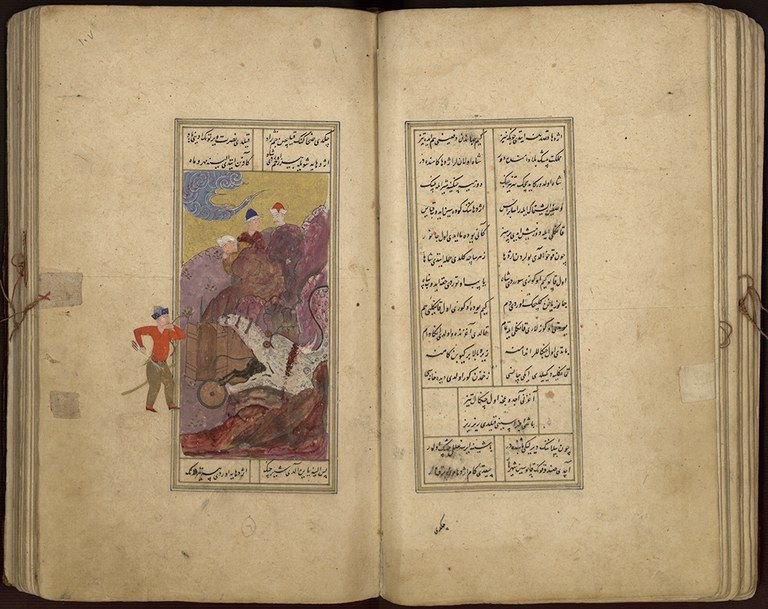


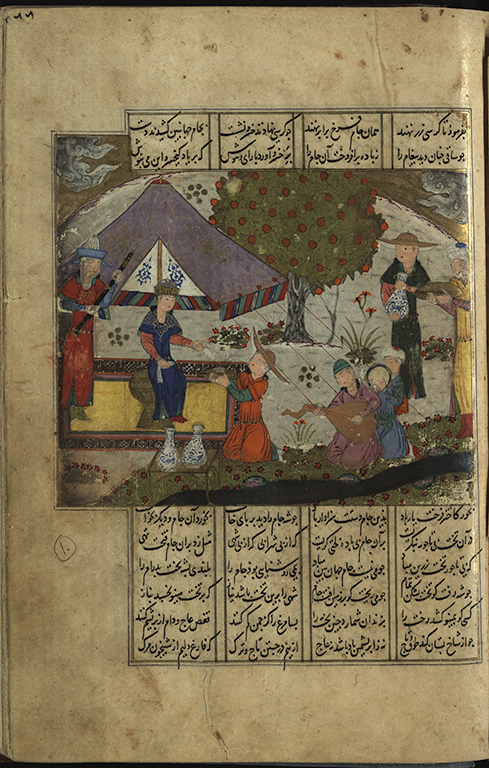
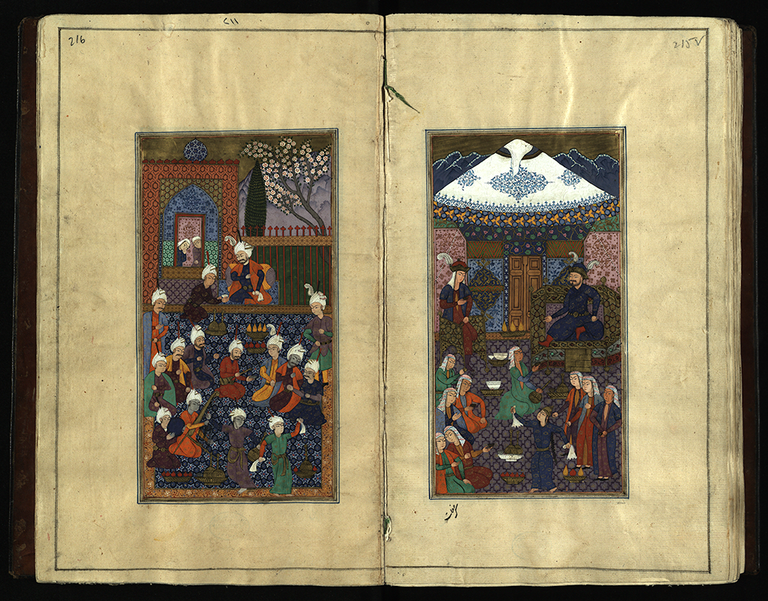

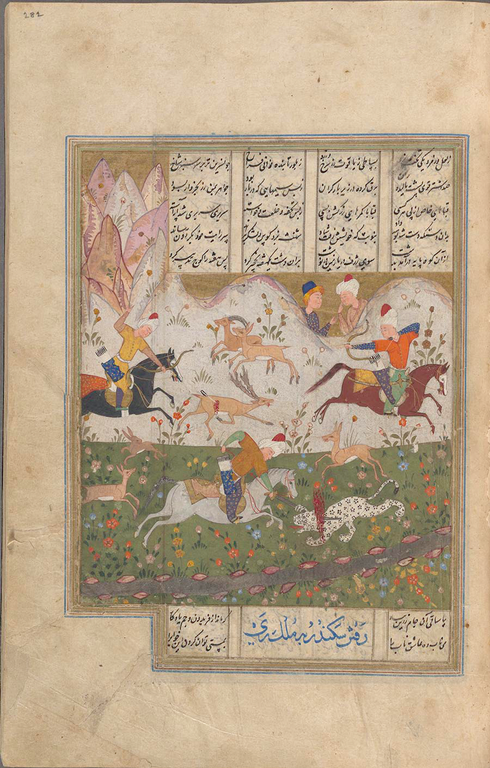

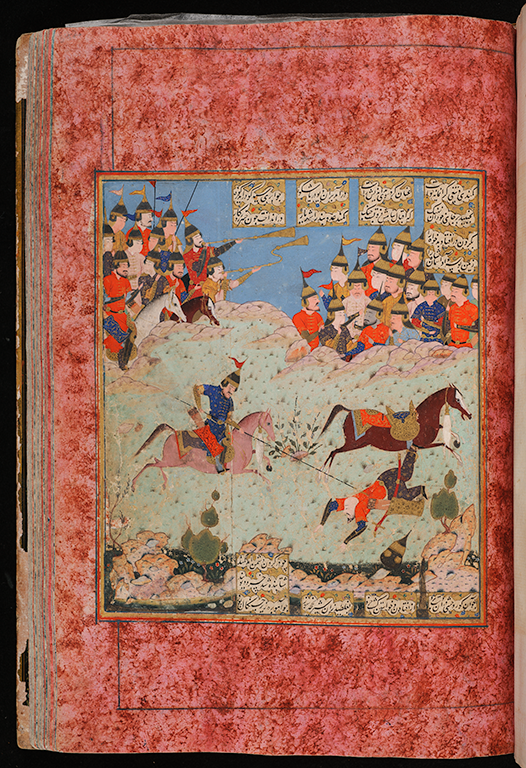






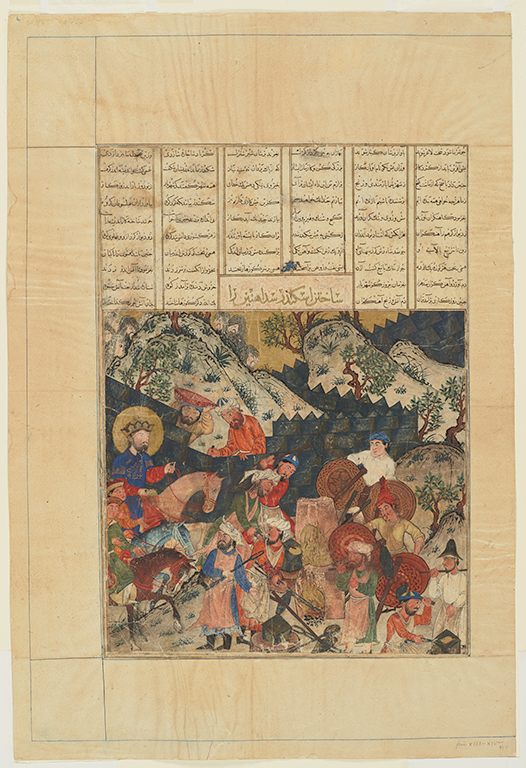





/http%3A%2F%2Fstorage.canalblog.com%2F27%2F67%2F119589%2F34953707_o.jpg)
/http%3A%2F%2Fstorage.canalblog.com%2F46%2F83%2F119589%2F34922409_o.jpg)
/http%3A%2F%2Fstorage.canalblog.com%2F84%2F21%2F119589%2F33118692_o.jpg)
/http%3A%2F%2Fstorage.canalblog.com%2F57%2F90%2F119589%2F32735263_o.jpg)